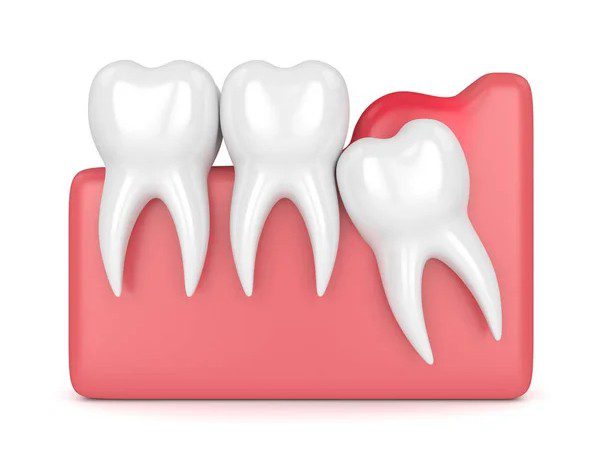Impaction
Wisdom teeth are a common cause of apprehension in the realm of dentistry, primarily due to a condition known as impaction or the need for wisdom tooth extraction. For many individuals, these molars have long been a source of dental concern. Wisdom teeth typically emerge alongside your existing molars, and the discomfort they bring typically arises between the ages of 17 and 25. When an impacted wisdom tooth triggers pain, extraction becomes the recommended course of action.

An Impacted Tooth is one which fails to erupt in the jaw causing:
- Jaw Pain and Discomfort: Impacted teeth often cause discomfort and pain in the jawbone.
- Swelling: Swelling in the affected area is a common symptom of tooth impaction.
- Infection and Cysts: The inability of the tooth to emerge properly can lead to infections and the formation of cysts.
- Damage to Adjacent Teeth: Impacted teeth can exert pressure on neighboring teeth, potentially causing damage.
- Halitosis (Bad Breath): Impacted teeth can contribute to bad breath and oral hygiene problems.
- Difficulty Opening the Mouth: Impaction can restrict mouth opening, leading to speech and eating difficulties.
- Tooth Position: The tooth’s orientation within the jaw, whether horizontal, medially inclined, distally inclined, or inverted, can obstruct its eruption.
- Tooth Crowding: Overcrowding among teeth in the jaw can impede the path of the impacted tooth.
- Lack of Jaw Space: In some cases, there’s insufficient room within the jaw for the tooth to emerge.
- Trauma: Injury or trauma to the affected area can result in tooth impaction.
Common Issues with Wisdom Tooth
Wisdom teeth, unlike their dental counterparts, frequently pose distinctive challenges. These molars are commonly associated with pain, which can manifest during their growth or intensify upon their full emergence. Several recurrent issues are frequently linked to wisdom teeth, including:
- Misalignment: Wisdom teeth may grow in the wrong direction, resulting in discomfort and dental problems. When they shift towards or away from the second molars, it can lead to decay and misalignment.
- Partial Eruption: On occasion, wisdom teeth only partially break through the gumline, leaving a portion of the tooth trapped beneath the surface. This partial growth can be attributed to factors such as bacterial infection, inflammation, and gum-related diseases. As a consequence, both the jawbone and the adjacent soft tissues are impacted, leading to pain and discomfort.
Wisdom teeth exhibit unique growth patterns, often necessitating vigilant monitoring and timely intervention to prevent and address these recurrent issues effectively.

